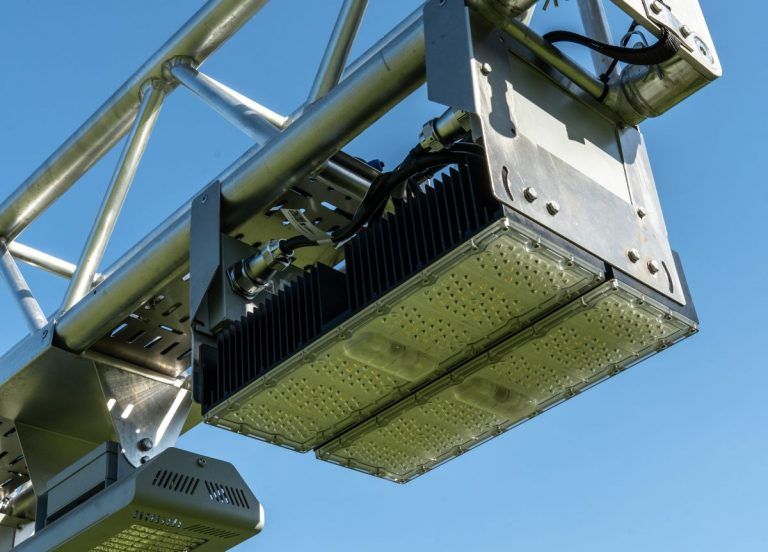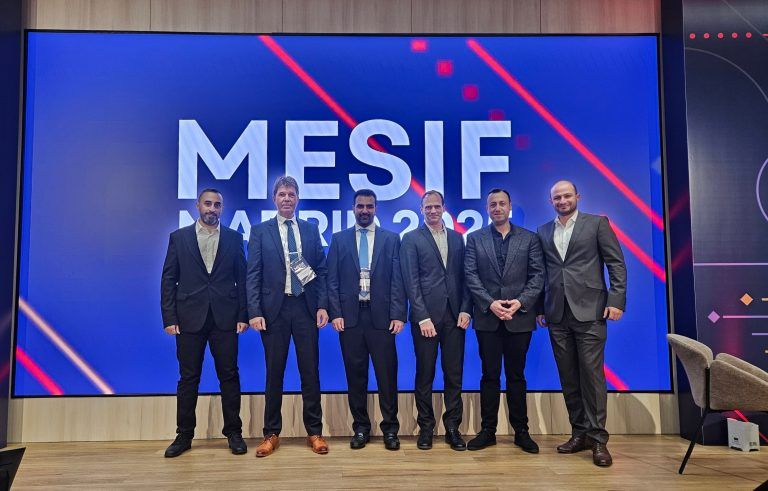
Sunlight is more than just brightness: it is made up of a broad spectrum of different light waves – from ultraviolet to infrared. It is precisely this interplay that is crucial for the growth and health of sports turf.
Time of day and weather influence the light spectrum
The spectrum of sunlight changes depending on the time of day, season and weather conditions. In the morning and evening, the light is redder and softer, as it hits the earth’s surface more shallowly and passes through more of the atmosphere. At midday, on the other hand, it is more intense, with a higher blue component. Clouds scatter the light, reduce the intensity and shift the colour spectrum – often at the expense of the parts that are particularly important for plant growth.

The colour temperature of the light is specified in Kelvin (K) and describes the colour tone of the light from the perspective of the human eye – i.e. whether it appears warm (yellowish/reddish) or cold (bluish).
Warm white light (2,000 – 3,000 K): Has a cosy and calming effect, reminiscent of candlelight or classic light bulbs. Often used in living rooms or for relaxation.
Neutral white light (3,500 – 4,500 K): Has a functional and clear effect, ideal for work areas, offices or sports facilities.
Cool white to daylight white light (from 5,000 K and higher): Has a high blue component, has an activating effect and promotes concentration. Corresponds roughly to natural daylight under a clear sky.
CLS pitch lighting system supports turf growth
In the winter months, in heavily used pitch areas and in modern stadium buildings, sports turf does not receive enough natural light. It therefore needs additional growing light for even and healthy growth. To achieve optimum results, this must be precisely matched to the available natural light, the location and the respective weather and climatic conditions.
This is precisely where the playfield lighting systems with CLS (Complete Light Spectrum) technology from Rhenac come in. They customisable light spectra – with 90% light homogeneity, consistent covering the turf and precisely matched to the natural needs of the sports turf.
Conventional lighting systems are inflexible
Until now, high pressure sodium (HPS) lamps or monochromatic LEDs have been used for turf lighting. However, these have various disadvantages:
- HPS lamps emit light with wavelengths between 550 and 630 nanometres. This corresponds to the yellow-orange range of visible light. However, blue light (400-490 nanometres) and red light (640-700 nanometres) are particularly important for photosynthesis and therefore for the growth of grass, as these wavelengths are best absorbed by the plant. HPS lights therefore emit precisely the light that is less usable for the plant. HPS systems emit a lot of heat, putting the plants under additional heat stress.
- Monochromatic LEDs can be dimmed, i.e. the light intensity is variable, but they have a fixed, unchanging light spectrum.
Light Quality
makes it
- 30 x more plants per cm2 in 4-weeks
- Compact density
- Strong vital leafs
- More resilient
- Stronger roots

Customised light for turf health
In contrast to these conventional lighting systems, Rhenac’s CLS (Complete Light Spectrum) technology offers full spectrum light – comparable to the entire rainbow of colours of natural sunlight.
This means that Rhenac’s pitch exposure systems can reproduce any combination of light wavelengths – from ultraviolet (UV) through the visible spectrum (red, blue, green, etc.) to infrared (IR). Each part of the spectrum plays a unique role in plant development:
- Red light supports germination and shoot growth.
- Blue light promotes root development, shear strength, leaf structure and density.
- White or full spectrum light supports overall turf health and vitality.
- Far red stimulates length growth.
- Infrared only warms when it is useful.
With Rhenac’s CLS pitch lighting systems, each LED channel can be controlled individually. This allows wavelengths to be mixed, adjusted and precisely matched to the growth stage, grass type or seasonal requirements of the turf – for customised and biologically effective light.
It’s not only about the amount of photons; the ratio between wavelengths matters. Harmonizing the change of the spectrum in the wavelengths with the correct settings by a smart controller brings such lighting conditions very close to nature.

Practical solutions for every turf problem
- Targeted light spectrum control – in the VELTINS Arena (Schalke 04), the combination of blue light (450 nm) and red light (660 nm) promotes turf growth
- Ilumination of shaded stadiums – in stadiums with a roof, deep red is used to stimulate germination when there is a lack of natural daylight.
- Daylight for the underground turf store – at Real Madrid’s Bernabéu stadium, the CLS pitch lighting system provides the turf with the light it needs to grow.



